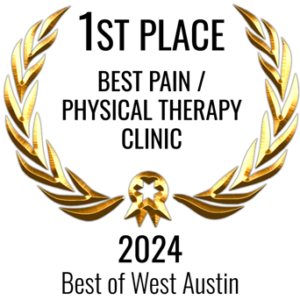Radiofrequency Neurotomy
Relieve Chronic Back and Neck Pain
What Is RFN?
Minimizing and often completely eliminating pain can be very beneficial in helping an individual return to normal life activities. Radiofrequency Neurotomy (RFN) is a non-surgical procedure used to treat chronic pain from back and neck arthritis.
The Science
Facet joint pain in the neck and back can be very debilitating. Radiofrequency Neurotomy numbs this pain by safely cauterizing the small medial branch nerves that provide sensation to the facet joints. Patients that have been shown to have pain originating from the facet joints along the spine are candidates for this procedure. Injections to block the facet joints and the median branch nerves that innervate the joints are performed prior to the cauterization procedure itself, so the overall process involves several visits. The pain reduction will typically last 6-24 months until the nerve branches are able to repair, and the RFN procedure can be repeated when the pain returns.
PATIENT RESOURCES
Radiofrequency Neurotomy Pre & Post Care Information sheet
FAQ'S
Many patients will have spine pain which can originate from many sources. The disk, even when herniated or bulging, may not be the source of pain. Facet joint pain is quite common, and can present as pain in the back or neck, and often will produce referral patterns into the leg or arm. It is often difficult to distinguish whether the pain is coming from the disk or from the facet joints. To make it more challenging, the pain may often come from both types of structures.
Many patients will first present with a disk protrusion or herniation. As that process naturally resorbs and resolves, the disk space will narrow and the facet joints will begin to bear more weight and produce more pain. The pain may begin to change and begin to come more from the facet joints.
The procedure is performed using local anesthetic without sedation. Fluoroscopic guidance is used to help ensure safe and correct placement. Once proper placement is confirmed, local anesthetic is injected to make the cauterization quite tolerable, and the tip of the needle then heats the surrounding tissue to disable each small nerve branch. The entire procedure usually takes about 20-45 minutes.
Median branch nerves are small nerves that branch out from the larger spinal nerves exiting the spine. These nerves transmit mostly sensory information. The medial branch nerves supply the facet joints, ligaments, skin, and small muscles at each segment. These are NOT the nerves that are responsible for movement of the extremities and sensation in the arms or legs. Each facet joint is innervated by 2 different median branch nerves.
The RFN procedure is considered to be generally very safe. Because this procedure is performed under fluoroscopic guidance and the patient is awake, the risk of large nerve injury is quite rare. Patients may sometimes report that they have some numbness of the skin overlying the injection site, which usually returns to normal over 1-2 months.
Because the procedure is performed while the patient is awake, you may feel some uncomfortable sensations at times, mostly during placement of the needles. The cauterization itself is usually painless. After the procedure, the patient may also have some injection site tenderness for several weeks. Patients may take pain and/or anti-inflammatory medications following the procedure.
Most experienced interventionalists agree that sedation is rarely needed due to the minimal amount of pain, small needle size, and short 30-40 minute procedure. Local anesthetic will be injected, which manages most of the minor discomfort of the procedure. By avoiding unnecessary sedation, the patient is able to walk a few minutes after the procedure, recover fairly quickly over about 30 minutes, and leave the facility without the problems that conscious sedation produces.
There are no restrictions specific to the procedure. You may return to activity when you feel able to do so. Because of soreness, some patients may choose to wait a week or two before planning any major traveling or other strenuous activity.
Spine surgery is helpful when necessary, if the spinal disks have become too worn out or cause too much nerve compression that does not respond to more conservative measures. Many patients initially get better with decompression spine surgery, but there will often be pain that develops later on. That pain may come from accelerated narrowing of the spine disk level as a result of the disk being partially removed.
Spinal fusion produces additional stresses on the disks and facet joints above and below the fusion. The pain from adjacent facet joints may be treatable with RFN.
Many patients will have spine pain which can originate from many sources. The disk, even when herniated or bulging, may not be the source of pain. Facet joint pain is quite common, and can present as pain in the back or neck, and often will produce referral patterns into the leg or arm. It is often difficult to distinguish whether the pain is coming from the disk or from the facet joints. To make it more challenging, the pain may often come from both types of structures.
Overall, 70-80% of patients report satisfaction with the RFN procedure. Studies have shown that there is a 50% chance of significant pain relief following the procedure for up to two years or longer. About half of the remaining patients get less benefit for shorter periods of time and some patients do not get any benefit from this procedure. The nerves will usually be repaired in time. Patients may require repeat lesioning as early as 6 months, but usually not for 1-2 years. There are many causes for pain, and this procedure addresses the facet joints predominantly. Other sources of pain, such as nerve compression and disk pain, are not generally affected. Further diagnostic testing may be needed if the patient does not respond satisfactorally to the procedure.
In this case, it may be that the pain generator is in a different location other than that supplied by the medial branch nerves that were treated. For instance, there may be adjacent facet joints causing pain that were not specifically treated with the procedure. The patient should be re-evaluated and other diagnostic interventions should be considered. Nerve compression and ligament injury are other common causes of pain that respond poorly to RFN, and each is treated differently (see Epidural Steroid Injection, PRP, BMAC, and Prolotherapy, respectively). At CHARM, we will often find a combination of these techniques are necessary, because complex pain often has multiple sources and thus requires multiple treatment strategies.



